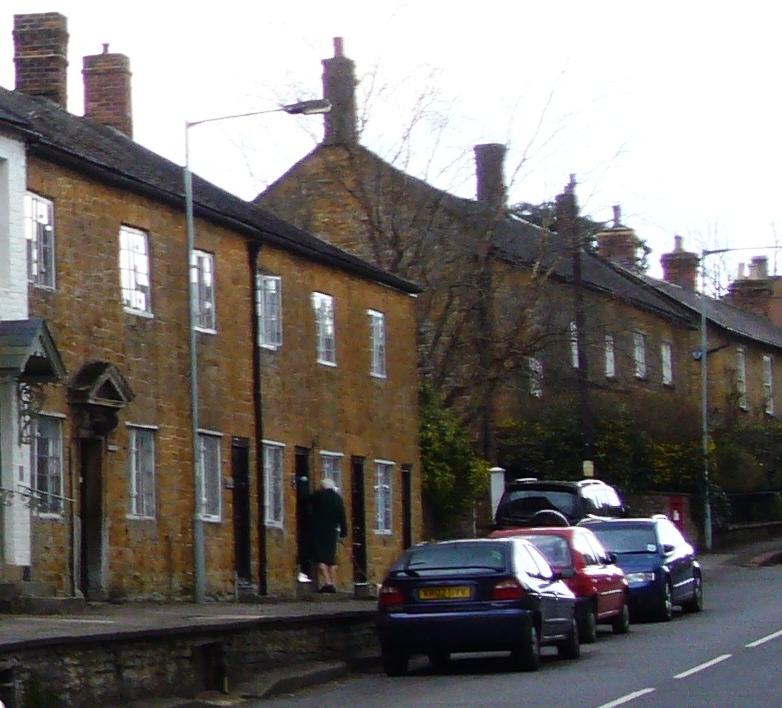Site of Royal Oak, Castle Cary

The Royal Oak at South Cary was open by 1729 when it was furnished with at least four bedsteads, tables, chairs, pewter, and brewing vessels belonging to the lord of the manor in 1729.[1] The inn had a ballroom, opened in 1779 when it was a venue for concerts and plays as well as a ball, but was closed by 1785 and converted into a subscription Sunday school to accommodate 40 poor boys learning to read and write.
A barrel-vaulted room on the first floor at right angles to the terrace in the house now called Tudor Cottage was probably that room. In December 1794 the property was sold and included ‘a very long room now converted into a Sunday school room’. The building, ‘sometime used as the Royal Oak inn’, was said to have been recently put in repair and might be used as a residence for two ‘genteel families’.
However by, 1810 it was a number of tiny workers' tenements known as the Old Royal Oak, up to seven by 1840.[2] The back part of the site was used to build the large house known as Park Cottage, apparently leading to the demolition of two cottages at the rear and leaving the rest with only a tiny courtyard. The five houses, which survive, (left of photograph) formerly used the ground floor of the extension under the former schoolroom as a communal toilet and wash house.[3]
[1] TNA, PROB 3/29/62.
[2] SRO, D/P/cas 4/1/3; ibid. tithe award.
[3] Info. from Brian Murless, Somerset Industrial Archaeological Society.
